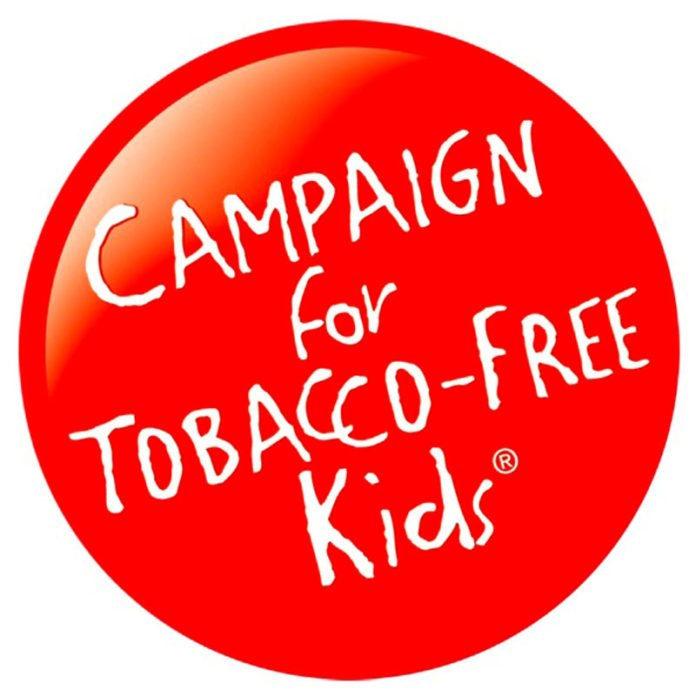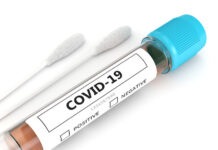States Challenged to Close Big Gaps in Who Still Smokes, Confront Youth E-Cigarette Epidemic
WASHINGTON, Dec. 14, 2018 /PRNewswire/ — Twenty years after reaching a landmark legal settlement with the tobacco companies, the states continue to spend only a small fraction of their billions in tobacco revenue on programs to prevent kids from using tobacco and help smokers quit, according to a report released today by a coalition of public health organizations. The report challenges states to do more to fight tobacco use – the nation’s No. 1 cause of preventable disease and death – to accelerate progress, address large disparities in who still smokes and confront the growing epidemic of youth e-cigarette use in America.
This year (fiscal year 2019), the states will collect $27.3 billion in revenue from the 1998 tobacco settlement and tobacco taxes, but will spend only 2.4 percent of it – $655 million – on prevention and cessation programs, the report finds. Not a single state currently funds tobacco prevention programs at the level recommended by the Centers for Disease Control and Prevention (CDC), and only two states – Alaska and California – provide more than 70 percent of the recommended funding.
The report – “Broken Promises to Our Children: A State-by-State Look at the 1998 Tobacco Settlement 20 Years Later” – was released by the Campaign for Tobacco-Free Kids, American Cancer Society Cancer Action Network, American Heart Association, American Lung Association, Robert Wood Johnson Foundation, Americans for Nonsmokers’ Rights and Truth Initiative.
This year marks the 20th anniversary of the landmark legal settlement between 46 states and the major tobacco companies, which – along with earlier settlements with four individual states – required the companies to pay more than $246 billion over time as compensation for tobacco-related health care costs, restricted some forms of tobacco marketing and provided funding for a national public education campaign to prevent youth tobacco use.
Along with separate policy actions, including higher tobacco taxes and comprehensive smoke-free laws, the settlement has helped drive down smoking rates to record lows – 14 percent among adults and 7.6 percent among high school students in 2017. But tobacco use still kills more than 480,000 Americans and costs the nation about $170 billion in health care expenses each year.
The report calls for urgent action to address two major challenges in the nation’s fight against tobacco:
- Despite overall progress, there are large disparities in who still smokes and who suffers from tobacco-related diseases in the United States. Smoking rates are highest among people with lower income and less education, residents of the Midwest and the South, American Indians/Alaska Natives, LGBT Americans, those who are uninsured or on Medicaid, and those with mental illness. These differences are in part due to the tobacco industry’s targeting of vulnerable populations through advertising, price discounting and other marketing strategies – such as the use of flavored products, including menthol cigarettes.
- Youth e-cigarette use has skyrocketed to epidemic levels. New data released by the CDC and the Food and Drug Administration (FDA) shows that, from 2017 to 2018, current e-cigarette use increased by 78 percent among high school students (to 20.8 percent) and by 48 percent among middle school students (to 4.9 percent). More than 3.6 million middle and high school students now use e-cigarettes – an increase of 1.5 million students in just one year. This increase has been driven by the popularity of Juul, a sleek, high-tech e-cigarette that is small and easy to hide, comes in appealing flavors like mango and mint, and delivers a powerful dose of nicotine.
“Because of our enormous progress, it is within our reach to win the fight against tobacco,” said Matthew L. Myers, President of the Campaign for Tobacco-Free Kids. “But we cannot let our guard down – not when smoking rates remain so high among certain populations and regions in our country and not when e-cigarettes threaten to addict another generation of kids. Policymakers at all levels must stand up to the tobacco industry and fully implement the proven strategies that can end this scourge once and for all.”
To accelerate progress, the report calls for full implementation of proven strategies to reduce tobacco use. In addition to well-funded tobacco prevention and cessation programs, these include significant tobacco tax increases, comprehensive smoke-free laws, hard-hitting mass media campaigns, barrier-free insurance coverage for tobacco cessation treatments and laws raising the legal sale age for tobacco products to 21.
It calls on the FDA to take several critical actions: implement its proposals to prohibit menthol cigarettes and flavored cigars; strengthen its efforts to address the youth e-cigarette epidemic by stopping the sales of all flavored e-cigarettes that have not been subject to public health review by the FDA and prohibit online e-cigarette sales until stronger safeguards are in place to prevent sales to kids; implement its plan to limit nicotine in cigarettes to minimally addictive or non-addictive levels (and apply this limit to other combustible tobacco products); and require graphic warnings covering at least half of cigarette packs, as required by law and as a federal judge recently ordered the FDA to expedite. Until the FDA stops the sale of all flavored tobacco products, states and localities should continue their growing efforts to do so.
Other key findings of this year’s report include:
- The $655 million the states have budgeted for tobacco prevention amounts to less than 20 percent of the $3.3 billion recommended by the CDC. Find out how each state ranks.
- Tobacco companies spend more than $14 to market tobacco products for every $1 the states spend to reduce tobacco use. According to the most recent data from the Federal Trade Commission (for 2016), the major cigarette and smokeless tobacco companies spend $9.5 billion a year – over $1 million each hour – on marketing.
“We cannot allow the progress we’ve made in the fight against the tobacco industry and their deadly products to stall,” said Christopher W. Hansen, President of the American Cancer Society Cancer Action Network (ACS CAN). “As state lawmakers prepare to convene in 2019, they must recommit to using the settlement funds from the historic lawsuit against Big Tobacco to fully fund cessation and prevention programs. They must also work to protect the public health of their residents by advancing policies that increase the price of tobacco products and implementing comprehensive smoke-free laws. Doing so will move us closer than ever to a tobacco-free future.”
“The fight against the tobacco industry’s ceaseless targeting of youth and minority communities requires leadership at all levels of government, and state officials must do their part through robust investments in proven tobacco prevention and cessation programs,” said Nancy Brown, CEO of the American Heart Association. “Sustained investments in tobacco prevention and cessation, combined with smoke-free workplace policies and tobacco tax increases, are necessary to break the cycle of addiction and save lives from tobacco use among all populations.”
“We know what it takes to prevent and reduce tobacco use – proven tobacco control policies that save lives,” said American Lung Association National President and CEO Harold P. Wimmer. “Despite the billions of dollars states continue to receive from the tobacco Master Settlement Agreement, our state leaders are not funding these programs at levels recommended by the CDC. Fully funding tobacco control efforts is the smart choice for states, we know it works, and it saves both lives and health care costs.”
“True to form, the tobacco industry has adapted to the regulatory environment and found novel ways to sustain nicotine addiction amongst adults and, more shamefully, youth through new products like electronic cigarettes,” said Cynthia Hallett, President and CEO of Americans for Nonsmokers’ Rights. “These adjudicated racketeers should be held accountable for misleading the public about the health effects of their products on the smoker and on nonsmokers. Local and statewide smoke-free laws that cover all workplaces at all times, including a prohibition on the use of e-cigarettes, protect the health of nonsmokers and can prevent another generation from being addicted to nicotine.”
“Our remarkable progress in bringing down youth smoking is an achievement we can take pride in, but we must not be complacent,” said Robin Koval, CEO and President of Truth Initiative. “With more than 20 percent of all high school students now using e-cigarettes and these young people being four times more likely to become smokers, it’s more important than ever that states use proven strategies – higher taxes, flavor bans, smoke-free air laws and Tobacco 21 policies – to prevent initiating a new generation into nicotine addiction.”
For more information, visit: http://www.tfk.org/statereport.




